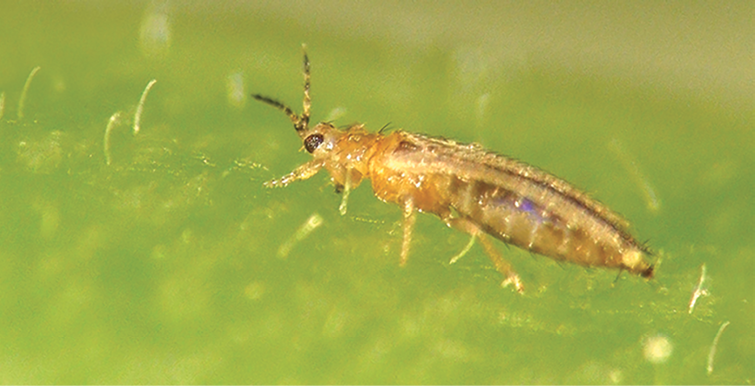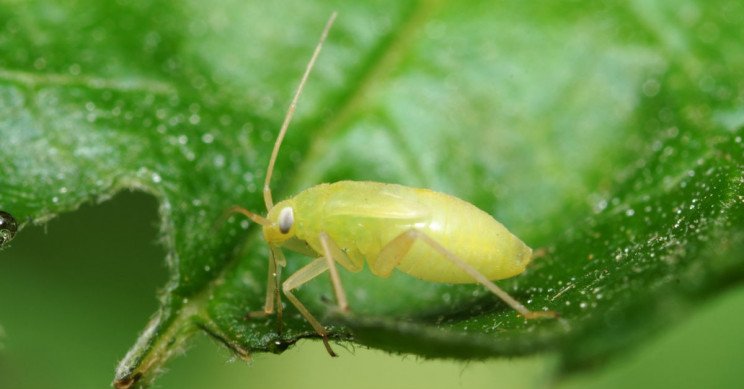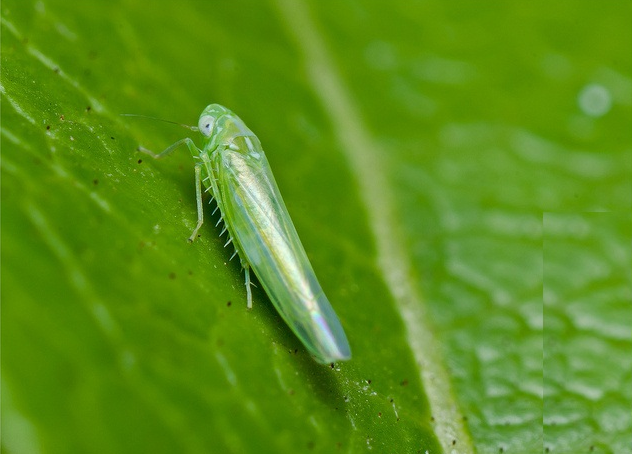Effective Methods To Control Sucking Pests In Tomato Fields
Tomatoes are the widely cultivated vegetable crop all over the country and can be grown on a wide range of soils from sandy to heavy clay. According to the horticulture department, on an average, 4 lakh tonnes of tomato per year are cultivated. However there are certain limitation of cultivating tomato of which sucking pests are of major concern
Sucking pests are one of the most common pests attacking tomato crops, the sucking pests suck the sap from the plant tissues thus resulting in curled and withered leaves, in severe infestation the leaves turn yellow and drop off.
Sucking pests in tomatoes includes Aphids, Jassids, Whiteflies and Thrips. These pests also act as vectors in transmitting viral diseases. Hence it is necessary for early diagnosis and treatment of the pest.
ALSO READ: WHAT IS INTEGRATED PEST MANAGEMENT AND HOW EFFECTIVE IT IS IN PEST CONTROL?

White fly

Thrips

Aphids

Jassids
Methods to Control Sucking Pests
Chemical Control:
Chemical control include usage of pesticides in the prescribed dosage for a given crop over usage or under usage of pesticides gives rise to ineffective results, however over usage of pesticides develop resistance in pests against insecticides leading to heavy losses.
Effective Chemicals for the Control of Sucking Pest Include:
Dimethoate 30% EC, Acephate 75 % SP, Imidacloprid 17.8% SL, Thiamethoxam 25% WG, these chemicals are either available as solutions or in powdered form.It is important to spray the insecticide in a prescribed form in order to avoid harmful effects on crop, for more information on dosages and utilization of insecticides download Jai Ho Kisan app.
Though the chemical fertilizers give effective results, excessive usage of these fertilizers results in harmful effects on humans as well as the environment. In addition to the chemical fertilizers there are certain biological methods which work effectively in controlling sucking pests.
Biological Control:
Biological method of pest control involves using natural enemies like the predators, parasitoids, pathogens and competitors for killing the pests. Insects like Ladybird beetle, lacewing bugs, hoverflies and other beetles help in reduction of sucking pests in large numbers, the insect predators feed on sucking pests when released into the crop fields.
Prevention!!
Rather than waiting for the onset of pests, certain measures could be applied in order to prevent the pest from attacking the field, Adequate prevention involves the application of a number of principles and include:
Field Sanitization:
Field sanitation is a critical and highly effective agriculture technique for controlling most diseases and pests.It includes removing and/or destroying disease sources, pest infestations, and weeds from the field, One important aspect that most of the farmers forget to follow is cleaning the farm tools since the farm tools carry spores of weeds, act as a vectors for easy spread of weeds
Border Crops:
The border crops help in reducing pests related problems thus acting as a barrier between the vectors and the crops. However, prescribed border crops should be chosen for any given crop since inappropriate selection of border crop might result in improper shade regulation. Sorghum is used mostly in many tomato fields as the border crops.
Limited Usage of Nitrogen Fertilizers :
Over usage of nitrogen fertilizer always results in judicial vegetative growth thus increasing the probability of pest attack, hence it is always advisable to apply nitrogen fertilizer in a given amount.
Installing Yellow Sticky Traps for Pest Monitoring:
Sticky traps work effectively in monitoring pests in the field. 4-5 sticky traps per acre is usually recommended for this purpose. It becomes easy to identify the intensity of pest population in the field through installing sticky traps in the field.
Field sanitization:
Removing dead and drying branches and stubs, allows room for new growth and protects the field from infestation. Pruned plants usually have lesser pest infestation and do not easily succumb to pest attacks.
Weed Management in Pest Control:
Weeds can harbour problem insects, Control measures include mowing outdoors, hand-pulling, and through spraying selected herbicides.
ALSO READ: WESTERN THRIPS OR BLACK THRIPS TO CROSS ECONOMIC THRESHOLD LEVEL
Methods used in Organic Farming:
In organic farming method, Neem Oil is used to effectively kill the pests.
Neem oil is Easy to spray and can be used up until the day of harvest. No matter what concentration of neem oil you use, all you need to do is mix it with water and spray it directly on plant leaves.
1 litre of neem oil would be sufficient to spray for one acre of land, mix 1 litre of neem oil with 200 ml of water to apply for one acre of land. For more information on symptoms and management of sucking pests, download Jai Ho Kisan Mobile App. Jai Ho Kisan is the digital platform envisioned to harvest smiles on farmers face thus providing every services like quality crop advisory of almost all crops helping farmer to get maximum yields, financially motivating farmers with updated market rates, information on schemes and policies introduced by government of India as well as weather updates thus helping farmer in planning their weather based farm operations.